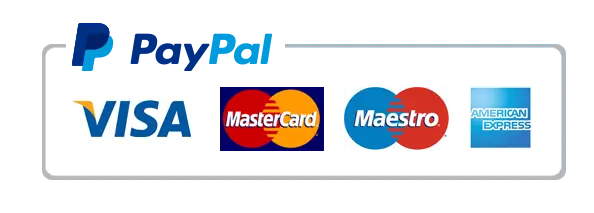But it wasn’t until almost two decades later, with the launch of Bitcoin in January 2009, that blockchain had its first real-world application. Because each block contains the previous block’s hash, a change in one would change the following blocks. The network would reject an altered block because the hashes would not match.
The key thing to understand is that Bitcoin uses blockchain as a means to transparently record a ledger of payments or other transactions between parties. Transactions follow a specific process, depending on the blockchain they are taking place on. For example, on Bitcoin’s blockchain, if you initiate a transaction using your cryptocurrency wallet—the application that provides an interface for the blockchain—it starts a sequence of events. Hyperledger is a blockchain that tried to solve the problem of enterprise adoption of blockchain via a permissioned protocol wherein only trusted entities could join the network and verify the transactions.
How Does Blockchain Protocol Work?
These validators are chosen at random by PoS based on the amount allocated. The higher a validator’s stakes, the more likely they are to be chosen. Ideate custom solutions for different industries like Manufacturing, Finance, Insurance, Logistics etc.
As we now know, blocks on Bitcoin’s blockchain store transactional data. Today, more than 23,000 other cryptocurrency systems are running on a blockchain. But it turns out that blockchain is a reliable way of storing data about other types of transactions. They are distributed ledgers that use code to create the security level they have become known for. Blockchain technology achieves decentralized security and trust in several ways. To begin with, new blocks are always stored linearly and chronologically.
What Is a Blockchain?
Today, computers and phones, regardless of their manufacturer or operating system can interact with one another thanks to the applications built on top of the operating system. Layer 2 is also often referred to as layer 2 scaling solutions because it aims to tackle the issue of scaling. These shards are processed in a parallel sequence and allow for increased processing capabilities and capacities. Now, it is good to mention that while many networks are implementing sharding solutions, much of this is theoretical and considered experimental. Remember that blockchain technology is still new, and like monkeys learning how to use tools, we too, are still essentially throwing spaghetti at the wall and seeing what sticks. A layer 1 solution is one that is built directly within the core protocol itself.
- Once a block (containing a unique code known as a hash) gets added to the chain, it can neither be altered nor deleted.
- As of 2023, there are more than 23,000 active cryptocurrencies based on blockchain, with several hundred more non-cryptocurrency blockchains.
- The native token TIA is used to pay for gas fees by developers, to participate in the network’s consensus mechanism through staking and for node creation.
- The dark web allows users to buy and sell illegal goods without being tracked by using the Tor Browser and make illicit purchases in Bitcoin or other cryptocurrencies.
- We need to understand this issue before we can understand why there are different protocol layers and tech built on top of some blockchain protocols.
To get the blockchain explained in simple words, it requires no central server to store blockchain data, which means it is not centralized. The Merge was Ethereum’s biggest upgrade and reduced the energy consumption required to secure Ethereum by 99.95%, creating a more secure network for a much smaller carbon cost. Ethereum is now a low-carbon blockchain while boosting its security and scalability. Ethereum has its own native cryptocurrency, ether (ETH), which is used to pay for certain activities on the network.
How Protocols Are Interconnected on the Blockchain
After that, since they control 51% of the network, they can broadcast their private version of the blockchain and form longer chains. Because of the longest chain rule (which regards the longest chain to be the most legitimate chain to mine on), the other participants will consider this to be the correct chain. The previous transactions that were not included in this chain https://www.tokenexus.com/what-is-a-blockchain-protocol/ (because it was private) will be reversed giving the malicious nodes access to other people’s money. Changes to the Bitcoin protocol require consensus among the network participants. The Bitcoin protocol has inspired the creation of numerous other digital currencies and blockchain-based technologies, making it a foundational technology in the field of cryptocurrencies.
- While not impossible to steal, crypto makes it more difficult for would-be thieves.
- There are many of us who believe that the future of blockchain technology will be multi-chain, that it will not be a single protocol winner takes all scenario.
- The consensus mechanism chosen by different layer 1 blockchains is the first step that will determine many of the core functions and features of a network.
- As the crypto market experiences a surge with NEAR Protocol and BNB showcasing significant pumps, Rebel Satoshi investors are bracing for what could be one of the most anticipated launches of the year.
- Using blockchain, this can be done almost instantly and at a much cheaper cost.
Blockchains also vary in their level of decentralization and throughput — i.e., the amount of data they can process in a given period of time. A significant amount of attention is directed toward resolving what’s known as the Blockchain Trilemma — balancing and maximizing scalability, decentralization, and security in one network. A consortium blockchain is a type of blockchain that combines elements of both public and private blockchains. In a consortium blockchain, a group of organizations come together to create and operate the blockchain, rather than a single entity. The consortium members jointly manage the blockchain network and are responsible for validating transactions. Consortium blockchains are permissioned, meaning that only certain individuals or organizations are allowed to participate in the network.



